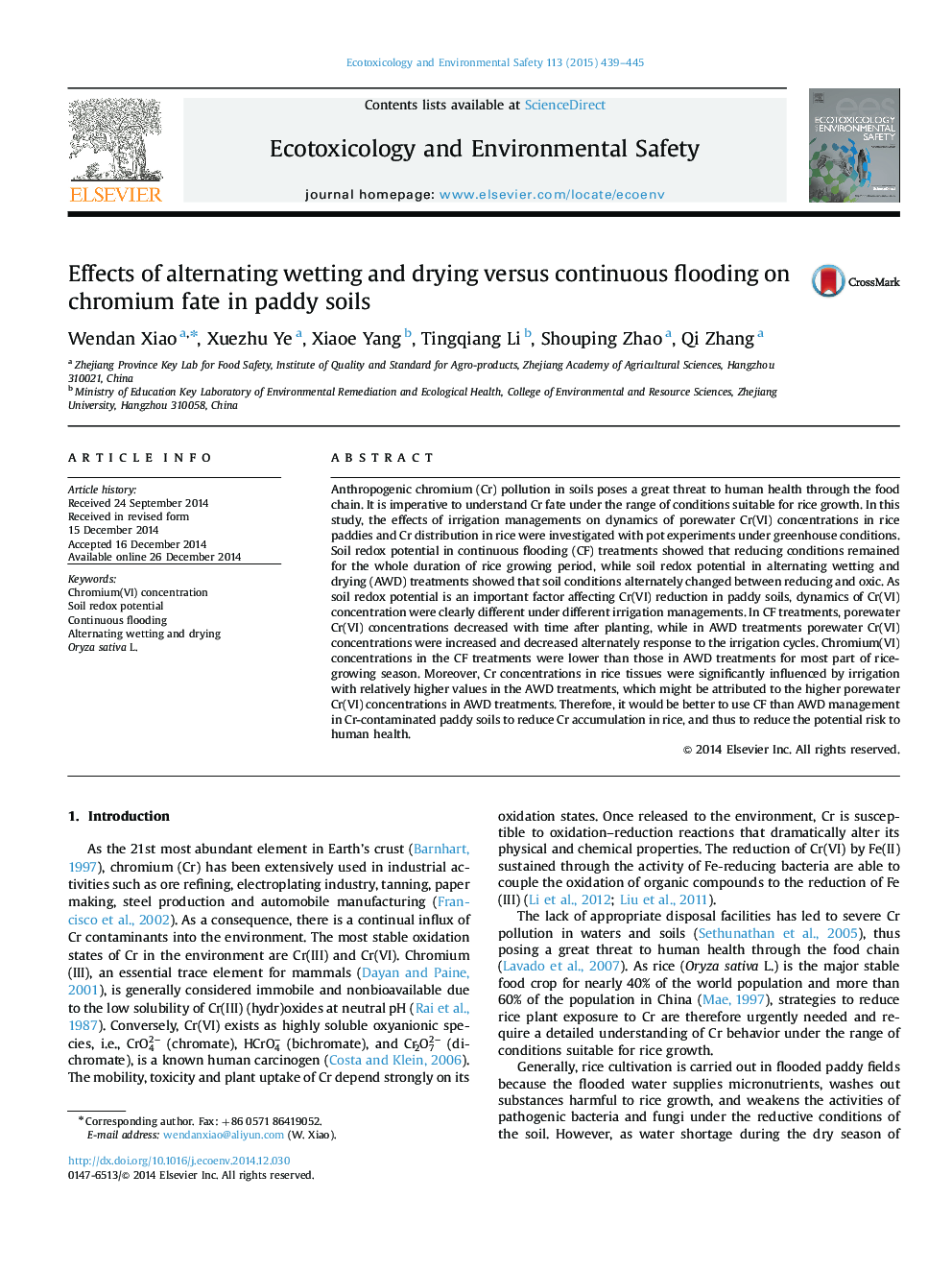| Article ID | Journal | Published Year | Pages | File Type |
|---|---|---|---|---|
| 4419704 | Ecotoxicology and Environmental Safety | 2015 | 7 Pages |
•Dynamics of porewater Cr(VI) concentration were clearly different under different irrigation managements.•Cr(VI) concentrations in continuous flooding treatments were lower than those in alternating wetting and drying treatments for most part of rice-growing season.•Cr concentrations in rice tissues were influenced by irrigation with relatively higher values in alternating wetting and drying treatments.
Anthropogenic chromium (Cr) pollution in soils poses a great threat to human health through the food chain. It is imperative to understand Cr fate under the range of conditions suitable for rice growth. In this study, the effects of irrigation managements on dynamics of porewater Cr(VI) concentrations in rice paddies and Cr distribution in rice were investigated with pot experiments under greenhouse conditions. Soil redox potential in continuous flooding (CF) treatments showed that reducing conditions remained for the whole duration of rice growing period, while soil redox potential in alternating wetting and drying (AWD) treatments showed that soil conditions alternately changed between reducing and oxic. As soil redox potential is an important factor affecting Cr(VI) reduction in paddy soils, dynamics of Cr(VI) concentration were clearly different under different irrigation managements. In CF treatments, porewater Cr(VI) concentrations decreased with time after planting, while in AWD treatments porewater Cr(VI) concentrations were increased and decreased alternately response to the irrigation cycles. Chromium(VI) concentrations in the CF treatments were lower than those in AWD treatments for most part of rice-growing season. Moreover, Cr concentrations in rice tissues were significantly influenced by irrigation with relatively higher values in the AWD treatments, which might be attributed to the higher porewater Cr(VI) concentrations in AWD treatments. Therefore, it would be better to use CF than AWD management in Cr-contaminated paddy soils to reduce Cr accumulation in rice, and thus to reduce the potential risk to human health.
